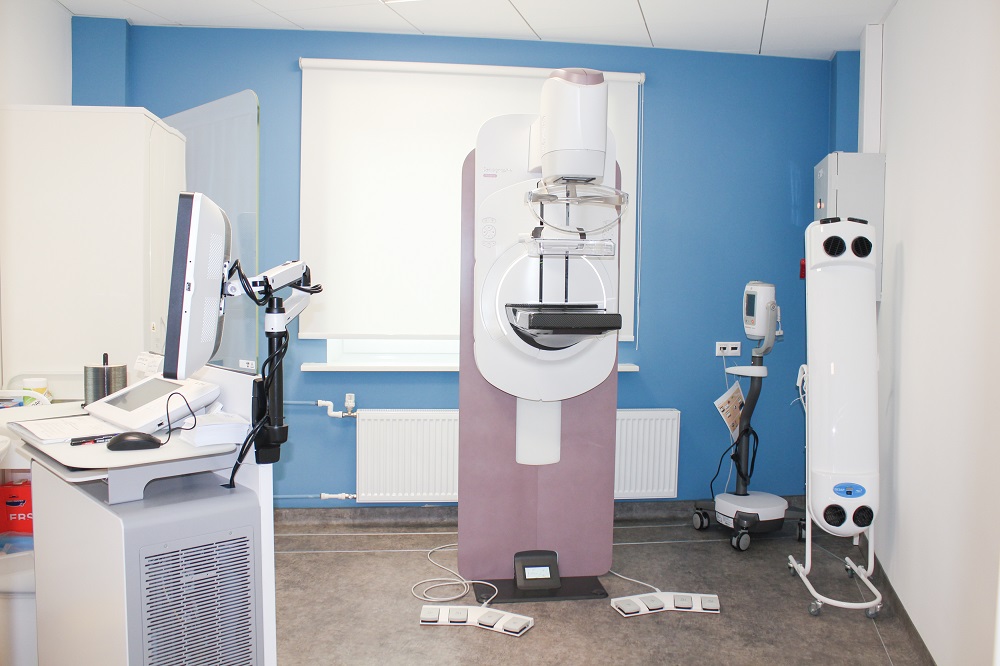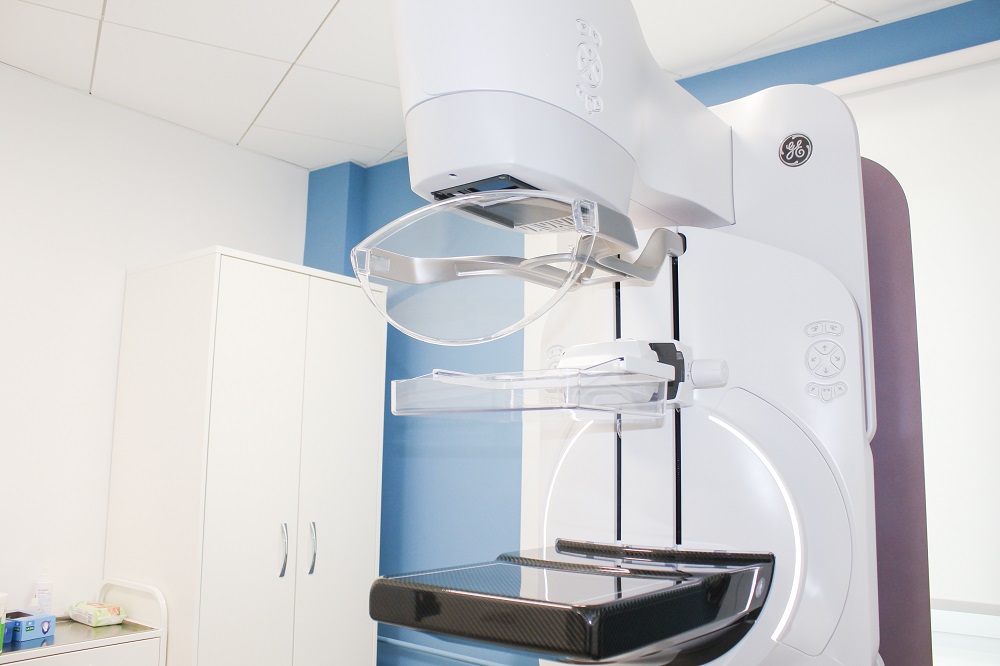
Breast cancer is one of the most common in the world and, in particular, Russian oncological diseases, which most often affects women. It appears in patients in the period after the onset of menopause mainly, however, a tumor can develop in a woman of any age. Sometimes cases of breast cancer are diagnosed in men, but they are rare in medical practice.
The mammary glands are composed of connective tissue, adipose tissue, and glandular tissue cells. In the latter (cells of the glandular tissue), mutations can occur that stimulate uncontrolled cell division. This is how malignant tumors of the breast develop, which are called breast cancer.
The oncological process occurs in a certain place of the mammary gland, the tumor can germinate and the neighboring tissues are affected. tissues and organs, and then cancer cells - metastases - spread through the blood or lymph nodes. Metastatic breast cancer can "hit" any organ, it affects the liver, lungs, brain, skin and skeletal system and is less treatable.
Mutations in the cells of the glandular tissue of the mammary gland can occur during a person's life (most often) - These are acquired mutations. In about a quarter of cases of acquired breast cancer, a gene is responsible which codes for the HER2 receptor. This receptor normally stimulates reproduction, but if, due to a mutation, the number its copies increase, this leads to the formation of a malignant tumor.
Mutations that cause breast cancer may be hereditary. These are mutations in the BRCA1 genes (the risk of getting sick with this mutation is 55-65%) and BRCA2 (45%). They are inherited.
Types of breast cancer
There are two types of breast cancer:
-
Ductal breast cancer is the most common type, in which cells that line the ducts of the breast become cancerous. There are two forms of it:
- Intraepithelial, or intracellular, ductal breast cancer is a less aggressive tumor and in the vast majority of cases are treatable. It usually does not metastasize.
- Invasive ductal breast cancer is more aggressive and grows out of control.
-
Glandular breast cancer also has two forms:
- Lobular glandular breast cancer, or invasive lobular carcinoma - tumor cells develop from cells producing milk during lactation. He often has several tumor nodes in his chest.
- Glandular breast cancer that grows from other cells in the breast.
Causes of breast cancer
Scientists still cannot say exactly why breast cancer develops. But it is known about the factors that can affect the occurrence of a tumor. These include:
-
External exposure or lifestyle factors - these should be eliminated in the first place for the prevention of breast cancer. This:
- Sedentary lifestyle. There is a lot of evidence that regular exercise reduces the chance of breast cancer, especially after menopause. How this happens is unknown. Probably the reason is the normalization of hormonal levels, metabolism, weight, and a decrease in inflammatory processes.
- Overweight and obesity. Especially this factor increases the risk of breast cancer in postmenopausal women, when estrogen synthesis (they are produced in the ovaries) is taken over by adipose tissue cells. And if there is a lot of this tissue, the amount of hormones also increases, which can contribute to the occurrence of malignant tumors in the mammary gland. Insulin, which is elevated in overweight people, may also have a negative effect on breast cancer risk. But the link between excess weight and the risk of breast cancer is not so clear. Conversely, some studies suggest that being overweight before menopause may slightly reduce the risk of breast cancer.
- Alcohol abuse. The dependence of alcohol consumption and the development of breast cancer is direct - the more and more often this use occurs, the higher the risk.
- Late first births (after age 30) slightly increase the risk of developing breast cancer.
- No breastfeeding. Some studies have shown that breastfeeding, especially for more than a year, slightly reduces the risk of breast cancer, which may be due to a reduction in the number of menstrual cycles.
- Some contraceptives increase the risk of developing breast cancer. These include oral contraceptives (after their withdrawal, the risk of a tumor gradually decreases over 10 years), Depo-Provera injections (but not all studies reveal their connection with breast cancer), implants such as a spiral, a vaginal ring, etc. (but this the issue has not yet been sufficiently studied).
- Hormonal therapy during menopause.
- Breast implants.
-
Risk factors for breast cancer that do not depend on a person:
- Gender. Men also get breast cancer, but about a hundred times less often than women.
- Over 55 years of age. The increased risk of breast cancer at this age is due to the accumulation of mutations in breast cells.
- Hereditary predisposition. The presence of diseased relatives on the maternal side increases the risk of breast cancer by 8-10 times. This is due to mutations in breast cells that are passed from parents to children. The most commonly mutated genes are BRCA1 and BRCA2, which are required by the body for DNA repair. And if these genes are damaged, the unrepaired DNA can mutate and cause cancer cells and tumors to form. Mutations in the TP53 genes (encodes a protein that is responsible for the destruction of cells with damaged DNA), ATM (encodes a protein that repairs DNA or destroys a cell if this is not possible), PTEN (regulates cell growth), CHEK2 also increase the risk of developing breast cancer. (encodes a protein that repairs DNA), STK11, CDH1, PALB2 and some others. Mutations in these genes provoke the occurrence of not only breast cancer, but also other oncological diseases: ovarian cancer, brain cancer, stomach cancer, leukemia, sarcoma, etc.
- Oncology in a personal history. If a patient has been diagnosed with cancer of one breast, then there is a risk of its occurrence in the second, as well as in other organs.
- Caucasian race. Other races also have breast cancer. But in blacks, malignant tumors are less common, though at a younger age. Breast cancer is less common in Asian women.
- Height. This risk factor is not fully understood or understood. But in tall women, breast cancer is slightly more common.
- The density of breast tissue. Density depends on the ratio of different tissue types in the breast. The more glandular and fibrous tissue, the higher the density and the risk of developing breast cancer.
- Early onset of menstruation (before age 12) and menopause after age 55.
- Radiotherapy. If a woman was exposed to radiation at a young age, when her breasts were still developing, this increases the risk of breast cancer.
- Some benign lesions. Slightly increase the risk of developing breast cancer proliferative neoplasms, such as fibroadenoma, papillomatosis, ductal hyperplasia without atypia, radial scar, sclerosing adenosis. Several times increase the risk of breast cancer atypical hyperplasia of the ducts and lobules, lobular carcinoma in situ.
- Some factors do not have an evidence base or are not fully understood, but indirectly they can also increase risk of breast cancer. These are food, smoking, night work, exposure to certain substances.
However, regardless of the group of risk factors, there are patients with breast cancer who do not have any of them, as well as those who do not have the disease, despite the presence of several risk factors at the same time.
Breast cancer symptoms
In the early stages of cancer, the disease either does not manifest itself at all, or the symptoms are so insignificant that the woman does not pay attention to them. But there are signs of breast cancer that can be detected during self-examination:
- change in breast shape or size, asymmetry;
- changes in the shape of the nipple, its asymmetric location;
- breast tenderness, breast redness, swelling;
- knots or other lumps in the breast;
- discharge from the nipple;
- changes in the skin, its texture, the appearance of ulcers or wounds;
- enlarged lymph nodes in the armpit area.
As a rule, patients seek help and treatment when they feel for a tumor in the breast, or when it discovered during a routine inspection. There may not be any symptoms. Pain rarely accompanies breast cancer in the early stages, it may appear during metastasis. Asymmetry is a common symptom, as the tumor changes the size of the breast and its shape. Some forms of breast cancer can cause the breast to shrink or deform. Others - breast enlargement due to swelling of the skin or the growth of a malignant tumor.
When cancer grows into other layers of the breast (subcutaneous tissue), some changes may appear on the skin, e.g. flattening of the skin, wrinkling, retraction, "lemon peel". If breast cancer is advanced, and a malignant tumor begins to grow to the surface, the skin of the chest may turn red, ulcerations appear on it. In the last stages of breast cancer, the nipples are deformed. Their location changes (higher on a diseased breast than on a healthy one) or structure (thickness, folds may appear).
Discharge from the nipple is rare, but may be the only symptom of pathology. Most often they are bloody, but can be purulent or serous.
Depending on the symptoms, different forms of breast cancer are distinguished: edematous-infiltrative (breast enlargement and redness), mastitis-like (seals in the mammary gland), erysipelatous (skin changes similar to erysipelas), shell (wrinkling of the breast, deformation), Paget's cancer (changes in the nipple and areola).
Self-diagnosis of breast cancer
A good practice to improve the effectiveness of treatment can be the habit of self-diagnosis after menstruation. To do this, you need to take off your clothes to the waist, stand in front of a mirror, raise your hands and put them behind your head to examine your chest. You need to turn one, then the other side. It should be in a standing position to feel the mammary gland with your fingers for the presence of unusual seals, squeeze the nipple to check for discharge. Then feel the chest in the supine position. If any symptoms are found, it is necessary to consult an oncologist.
Prevention of breast cancer
Prevention is aimed at eliminating risk factors that are associated with lifestyle. That is, you need to lead a healthy lifestyle and exercise regularly. There are no exact data on the frequency and quality of exercises, but there is evidence that even a couple of hours of exercise a week gives a positive result. Maintaining a normal weight, giving up bad habits, as well as careful use of contraceptives and hormonal drugs.



































